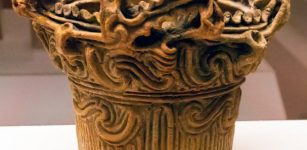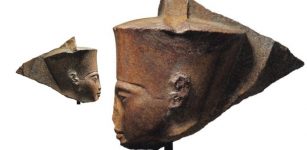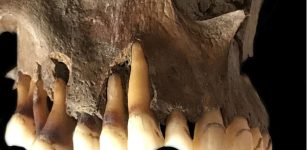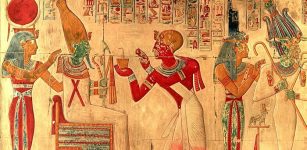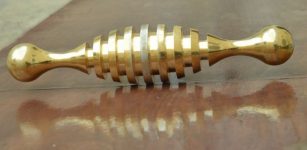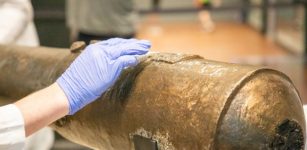What Female Jobs Could Lead To Being Accused Of Witchcraft In Early Modern England?
Jan Bartek - AncientPages.com - While both men and women have historically been accused of the malicious use of magic, only around 10–30% of suspected witches were men by the 16th and 17th centuries.
This bias towards women is often attributed to misogyny as well as economic hard times. Now, a Cambridge historian has added another contributing factor to the mix.
Page of Richard Napier's casebooks featuring the case of a young woman suffering perinatal ill health who suspects her former midwife of witchcraft. (CASE15411) August 1. Monday 12.15pm 1603. Credit: Bodleian Library
Dr. Philippa Carter argues that the types of employment open to women at the time came with a much higher risk of facing allegations of witchcraft, or maleficium.
In a study published in the journal Gender & History, Carter uses the casebooks of Richard Napier—an astrologer who treated clients in Jacobean England using star-charts and elixirs—to analyze links between witchcraft accusations and the occupations of those under suspicion.
Most of the jobs involved health care or childcare, food preparation, dairy production or livestock care, all of which left women exposed to charges of magical sabotage when death, disease or spoilage caused their clients suffering and financial loss.
"Natural processes of decay were viewed as 'corruption." Corrupt blood made wounds rankle and corrupt milk made foul cheese," said Carter, from Cambridge's Department of History and Philosophy of Science.
"Women's work saw them become the first line of defense against corruption, and this put them at risk of being labeled as witches when their efforts failed." This was in contrast to men's work, which often involved labor with sturdy or rot-resistant materials such as iron, fire or stone.
Moreover, women often worked several jobs, usually in the heart of their communities—criss-crossing between homes, bakehouses, wells, marketplaces—rather than off in fields or workshops.
Credit: Adobe Stock - Andrey Kiselev
"The frequency of social contact in female occupations increased the chance of becoming embroiled in the rifts or misunderstandings that often underpinned suspicions of witchcraft," said Carter. "Many accusations stemmed from simply being present around the time of another's misfortune."
"Women often combined multiple income streams, working in several households to make ends meet: watching children, preparing food, treating invalids. They worked not just in one high-risk sector, but in many at once. It stacked the odds against them."
As part of a decade-long project at Cambridge University, over 80,000 of the case notes scribbled down by the astrologer-doctors Richard Napier and Simon Forman were cataloged and digitized.
Napier serviced the physical and mental health needs of ordinary people from the area surrounding his Buckinghamshire practice, taking reams of personal notes on the woes of his clients. His records reveal everyday attitudes to magic in the decades before the English Civil War.
"While complaints ranged from heartbreak to toothache, many came to Napier with concerns of having been bewitched by a neighbor," said Carter. "Clients used Napier as a sounding board for these fears, asking him for confirmation from the stars or for amulets to protect them against harm."
"Most studies of English witchcraft are based on judicial records, often pre-trial interrogations, by which point execution was a real possibility. Napier's records are less engineered. He seems to have kept these notes only for his own reference," Carter said.
"The astrologer's services were accessible to the average person. People might visit him to stress-test their theories or look for magical solutions, rather than attempt a risky lawsuit. Napier's notes allow us access to witchcraft beliefs at a grassroots level, as suspicions bubbled up in England's villages."
Carter was able to use the now-digitized casebooks to trawl through his notes for suspected bewitchments, which made up only 2.5% of Napier's total casefiles.
Between 1597 and 1634, Napier recorded 1,714 witchcraft accusations. The majority of both accusers and suspects were women, although the ratio of female suspects was far higher.
Some 802 clients identified the suspected witches by name, and 130 of these contained some detail about the suspect's work.
Six types of work featured regularly across the 130 cases: food services, health care, childcare, household management, animal husbandry, and dairying. Such forms of labor were either regularly or almost exclusively the domain of women.
Dairy was symbolically tied to women as "milk-producers." Carter found 17 cases of magical spoliation of dairy, and 16 involved women only. For example, Alice Gray suspected her neighbors when cheese began to "rise up in bunches like biles [boils] &… heave & wax bitter." Failures in brewing and baking were also attributed to female witchcraft.
Women often managed food supplies—a power that bred suspicion. Many tales of tit-for-tat maleficium in Napier's notes derived from spurned requests for food. "Women were both distributers and procurers of food, and failed food exchanges could seed suspicions," said Carter.
One potential witch, Joan Gill, gained her reputation after her husband consumed milk she had been saving, and the spoon he supped it with lodged itself in his mouth overnight.
Not just denying others food but also supplying it could end in accusation. Nine out of ten suspects who sold food were women, with 25 accusations resulting from a bout of sickness after being fed.
Many women practiced as local healers, or "cunning folk," but this too was a risky occupation: suspicions arose when treatments failed. One male customer, troubled with "a great soreness [in] his privy [private] parts," told Napier a female healer had "wewitched him" after he sought a second opinion.
Some of the riskiest work was in what we now call "caring professions," still dominated by women today: midwifery, attending to the sick or elderly, childminding, and so on. For example, 13 suspects had cared for the accuser in her child-bed.
Infant mortality was high, and the prospect of losing a child often motivated allegations. Over 13% of all recorded witchcraft accusations naming a suspect involved a victim under the age of 12.
Loss of sheep and cattle was also a common cause of accusation. Just over half of livestock workers at the time were women. This parity can be seen in accusers (28 men and 28 women) but not suspects (15 men and 91 women). "Napier's casebooks suggest that disputes between men over livestock could get deflected onto women," said Carter.
"An early modern housewife was responsible for managing the health of livestock as well as humans; she made the poultices and syrups used to treat both. When an animal sickened strangely, this could be interpreted as a malefic abuse of her healing skills."
"Gendered divisions of labor contributed to the predominance of female witchcraft suspects," added Carter. "In times of crisis, lingering suspicions could erupt as mass denunciations. England's mid-17th-century witch trials saw hundreds of women executed within the space of three years.
A page from the casebooks of Richard Napier that includes the case of Mrs Pedder the younger of Potters Perry, who suspects a female healer of witchcraft. (CASE46520). April 30. Thursday 11.30pm. 1618. Credit: Bodleian Library
"Every Halloween we are reminded that the stereotypical witch is a woman. Historically, the riskiness of 'women's work' may be part of the reason why."
Of the 802 accusers in Napier's records, 500 were female and 232 were male. The gender of the remaining 70 was not recorded. Among the 960 suspects identified by this group of accusers, 855 were female and 105 were male. Collectively, this group of suspects was accused of at least 1,090 separate accounts of maleficium.
The physical calf-bound volumes of Richard Napier's casebooks are housed in the University of Oxford's Bodleian Library.
Examples from the casebooks used in the latest analysis
A female healer is suspected of witchcraft:
Mrs. Pedder the younger of Potters Perry. 33 years (old). April 30 Thursday 11.30 p.m. 1618.
Has not had the right course of her body these 3 years. Fears a consumption & (asks) what is good to keep her from it. Urine very good.
Would have a purge for herself & her husband who fears his father's disease. (He) cares not for meat (food). Is jealous of his wife (she) being very honest & chaste. & (he) is sometimes lunatic & mad. 4 years & a half, every 3 or 4 days. He thinks that he is bewitched with (by) one, a woman that gave his mother physick (medicine).
A young woman suffering perinatal ill health suspects her former midwife:
Sybil Fisher of Cogenhoe. 24 years (old). August 1. Monday 12.15 p.m. 1603
[Astrological chart] lightheaded (delirious).Lightheaded, laughs, but at first took it with a weeping. Looks ghastly. Fleering (scornful) looks. Sets her teeth. One night did nothing but swear and curse.
Sybil Fisher. She knows not of her husband's coming for her, knows nobody. They bind her hands and feet. When she is loose she is so strong that they cannot deal with her. Sings idle songs. Desires to dance. She had 2 midwives, the first unskilful, the 2nd froward (grumpy) & would not meddle with her because she was not first sent (for). Her suspected to be a witch. The woman well laid but a week after fell into these fits & at first speaking of her 2nd midwife said 'what doest thou there with thy black hen?" & such like speeches.
Man suspects former shepherdess of witchcraft:
John Johnson 58 years (old). July 11. Wednesday 9.50 a.m 1632. of Doddington by Wellingborough. Shepherd.
A fortnight since was taken in his knee. (It is) swelled & runs up to his thighs & back & (he) cannot rise. A bad stomach.
Back thighs hucklebone (hipbone) & knee. Cannot stir (move) nor rise nor help him(self).
Suspects witchcraft. Agnes Watts kept his sheep two years before. This shepherd much suspects (her). Lost a Cow.
The study was published in the journal Gender & History
Written by Jan Bartek - AncientPages.com Staff Writer

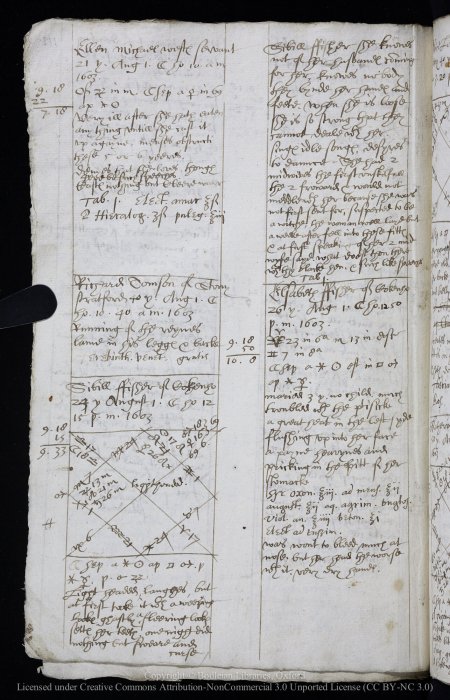

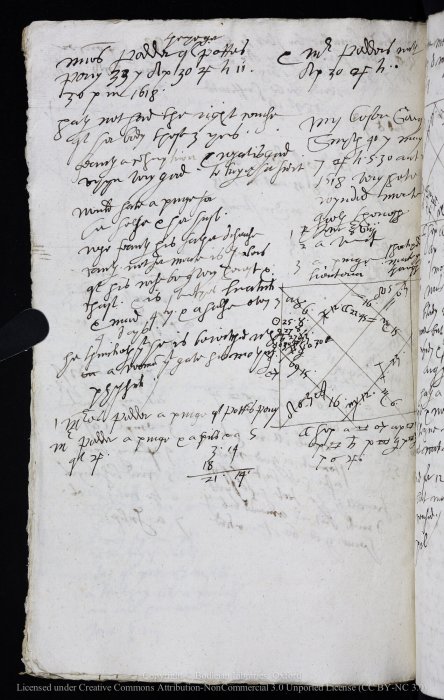
![Horses in the Eurasian steppes: Already 5000 years ago, they served pastoralists as a source of milk and a means of… [more] © A. Senokosov](https://www.ancientpages.com/wp-content/uploads/2021/09/pastoraliststeppe15-307x150.jpg)


